-
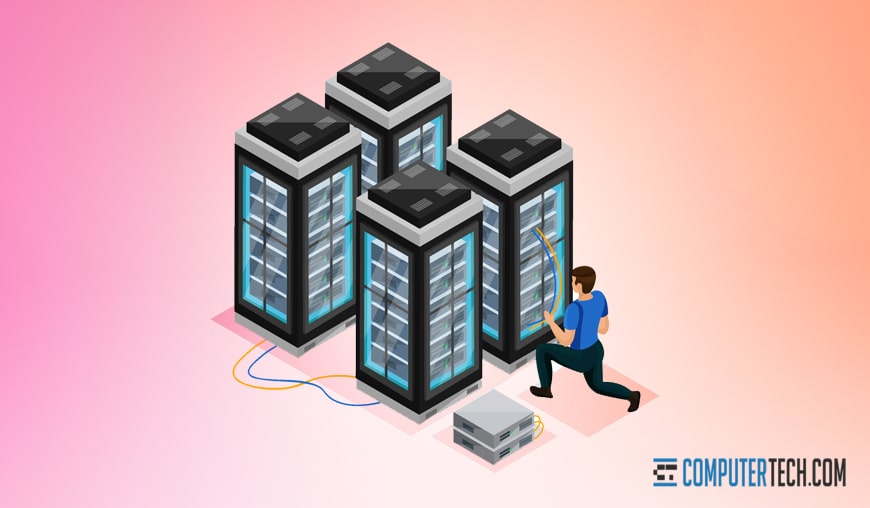
Every MSP has to answer the same question sooner or later: is it worth outsourcing IT, or should a business do it in-house? While it might seem like we would say “outsource it” as a matter of course, the truth is, there’s never a clear answer to a question like this.
As is so often the case with business-related questions, the answer is “it depends.” The needs of your business, your budget, how much SaaS applications you’re using; they all play a role in what form your IT should take.
Below, we’ll discuss the pros and cons of both internal IT and outsourced IT services, as well as influential factors you should consider when making your decision.
You can also contact us to talk about how our services could work for your business, and whether outsourced IT is right for you.
The Benefits of Internal IT
First, let’s discuss the benefits of an internal IT team.
You have direct control over internal IT staff and procedures. With an MSP, you have to go through their employees and management to discuss changes to your system, new apps you might want to use, or other service changes. With an internal team, you can directly discuss changes, implement changes more quickly, and ensure continuity throughout your business.
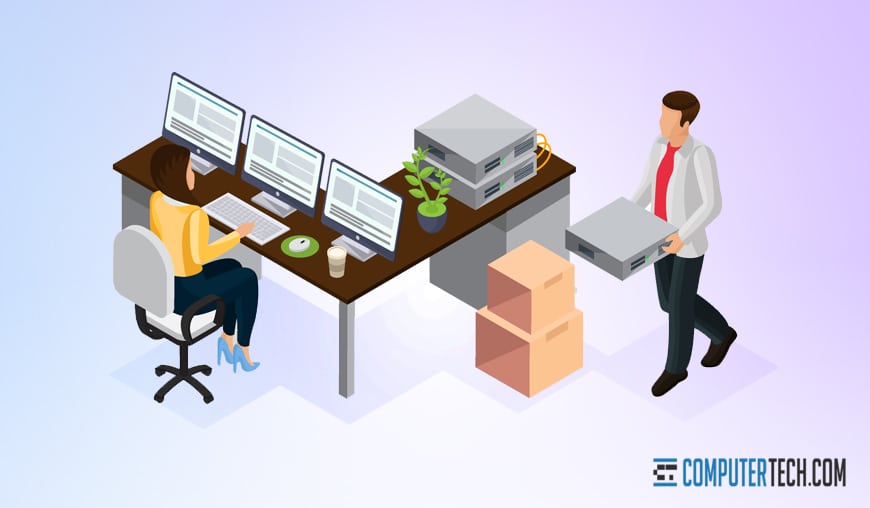
Your IT department has intimate and personal knowledge of your business. Many businesses have quirks or idiosyncrasies in their business processes. While occasionally these are holding a business back, often they’re simply choices between similar options. An internal team can become familiar with the company, the product, and all the details in play. An MSP is more likely to want to make changes to standardize the system without learning it, and may not remember specific information from incident to incident.
You have direct control over your data. Many businesses are deeply concerned with data, whether it’s customer data, user data, or trade secrets. It can be difficult to trust a third party to have access to this data, regardless of contract or legal repercussions. Keeping your data in-house adds an element of confidence in your control over it.
A loyal employee, treated well, becomes a long-term asset. There are a lot of concerns about the modern workforce being very transient. This is partially due to companies treating workers as disposable, fostering an atmosphere of poor treatment and turnover. However, treating an employee well earns their loyalty and makes them more likely to stick around long-term.
The Drawbacks of Internal IT
While there are definite benefits to keeping an internal IT department running, it is not without drawbacks.
Internal IT has a high buy-in cost. The average salary of a help desk employee, according to Indeed, is $50-$75k per year. Network administrators average $75k. IT managers average $90k. Even adjusted for local cost of living, these numbers can be relatively high. Add to this the price of servers and hardware, software licenses, training, certification, and other necessities, and you’re looking at a quarter-million per year for a small IT department.
You have direct control over your data. Yes, this was in the benefits, but it’s also a drawback. Having direct control over your data means you are solely responsible for things like backups and redundancy, data security and encryption, and so on. You need people who know what they’re doing and hardware to handle it. More importantly, in the case of failure or breach, you’re solely responsible.
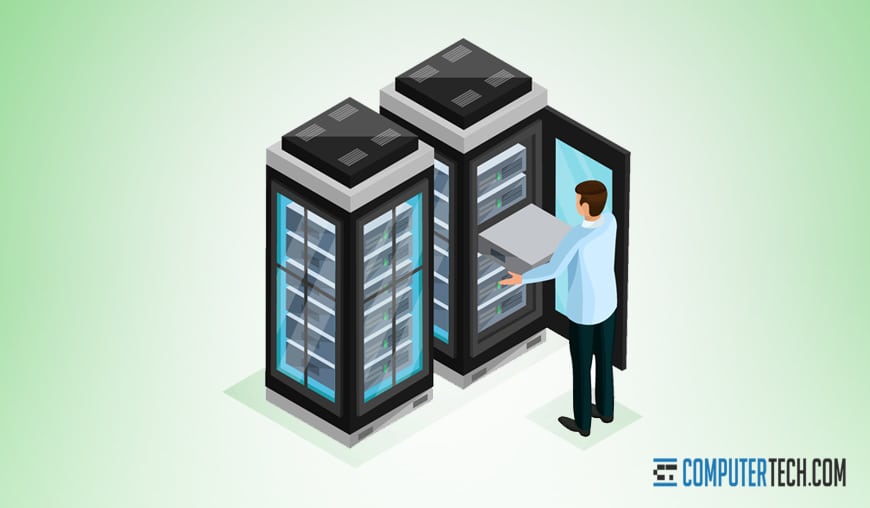
You may need, at minimum, two IT staff; one “IT guy” won’t cut it. A help desk employee is adequate for your customer support to assist customers or software users, but won’t know what they’re doing with high-level administration and development. A developer or network engineer may be bored or frustrated if they have to spend much of their time on support. An internal IT department often requires 2-3 employees to cover all of the bases.
It’s easy to overwhelm a small IT department as you grow. Scaling is essential for any business process. SaaS apps are powerful because they can usually scale with a press of a button or a single phone call. Internal departments may need to purchase and set up new hardware, hire and train new employees, and go through lengthy licensing processes manually.
It can be difficult to attract talented IT staff. Small businesses have small budgets, and high-quality IT staff demand high salaries. Worse, many of the best tech workers move to tech hubs like Silicon Valley, leaving rural areas, small cities, and less tech-focused cities with a lack of qualified staff. Simply finding talented IT employees can be difficult and expensive.
The Benefits of Outsourced IT
Outsourcing your IT needs to a managed services provider has a lot of potential benefits. Some of them are inversions of the drawbacks of internal IT, while others are particular benefits to outsourcing.
You don’t have to hire or pay dedicated IT staff. Depending on the MSP, you might have a dedicated account manager who learns your business intimately, or you might have access to a team. You don’t have to hire these people, which means you aren’t responsible for paying for benefits, insurance, ongoing training, certification, or other responsibilities.
In fact, costs are generally lower with an MSP than an internal IT department. MSP pricing models vary, including per-device, per-user, and per-hour models, so the total overall cost of service covers a wide range. Almost universally, though, the MSP service will be cheaper than setting up and maintaining an internal IT department.
Outsourced IT is easier to scale as your business grows. As mentioned above, scaling service with an MSP is usually as simple as calling your account rep and asking for more. It can be as easy as pressing a button, and in some cases, scales based on usage regardless. Costs and service go hand in hand, of course, but you’ll never have points where your needs outweigh your staff by an uncomfortable degree. Likewise, you’ll never reach a point where your service is much higher than your needs, as it can scale down as quickly as up.
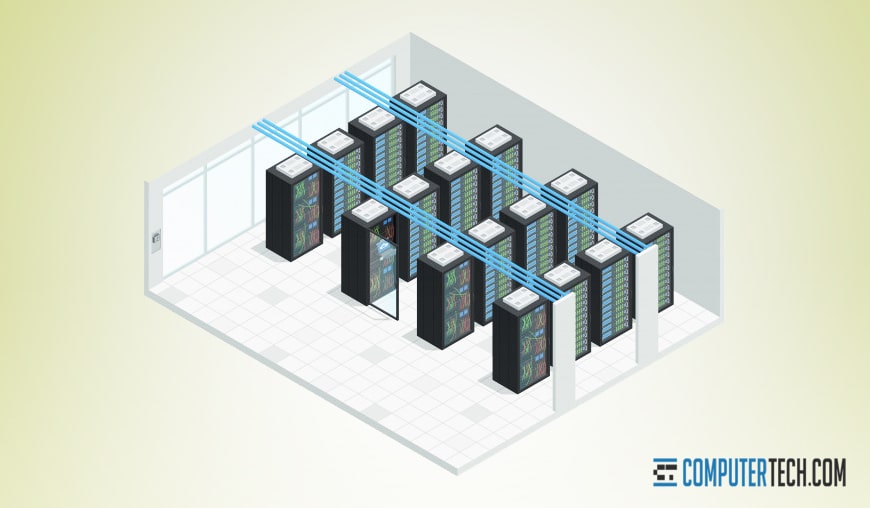
You get more staff than what your budget would allow with internal IT. Your MSP may assign you a dedicated representative or team, but they’ll also have people working behind the scenes in their teams. For example, they might have a dedicated hardware team that stands up new hardware as necessary or a dedicated team for additional features development and support. Hiring all of these people on your own, even part-time or on contract, will be much more expensive and time-consuming.
Outsourced IT typically has access to more expensive business-class tools you can use. It could be simple volume licenses for top-level packages of software. It might be access to business-class tools. It might merely be knowledge of tools you didn’t know about beforehand. MSPs often have resources you don’t have access to as a small business. They may also have contacts within other companies or industries they can leverage for your benefit.
The Drawbacks of Outsourced IT
Outsourced IT isn’t pure upside; there are some tangible downsides to using an MSP for some companies.
You have less direct oversight over your IT department. If a particular agent botches a job, is rude to an employee, or slacks off, you’re not able to reprimand them personally. Instead, you will need to go through your MSP contact for everything. This can mean butting up against an unfortunate company culture.

On a less failure-focused angle, if you want to make changes to your IT processes, you need to go through the MSP. Sometimes they’ll allow it, but sometimes it runs counter to their own established processes, and they’ll refuse. You may even have to deal with a particularly busy MSP and the delays of an overloaded phone system. The lag time between identifying a need or desire, and being able to discuss implementing it, is longer with an MSP than with an internal department.
Of course, choosing a reputable and knowledgable IT company will help you avoid this.
Some outsourced IT companies fail to customize their service to their clients. This is more of a failure on the part of a particular MSP than with MSPs in general. Some MSPs treat companies as interchangeable. They provide a “one size fits all” or kit-style service package with little or no room for customization. If your business has specific needs, they may not be able to adapt. It can take time to find the right MSP to work with your company.
Your IT company will have access to potentially sensitive company data. As mentioned above, as part of controlling your own data, if you’re using an MSP for outsourced service, they will have access to any data you process or store through them. While most companies will have contracts that specify rules about accessing that data, and penalties for violation, it’s still a barrier that some business owners don’t want to deal with.
What About a Hybrid Solution?
A partially-outsourced or hybrid solution is becoming increasingly common. Many businesses maintain a small on-site IT staff, who manage things like internal support and company hardware. Meanwhile, they hire an MSP to handle things like VoIP phone systems and continuity between business apps and cloud systems.
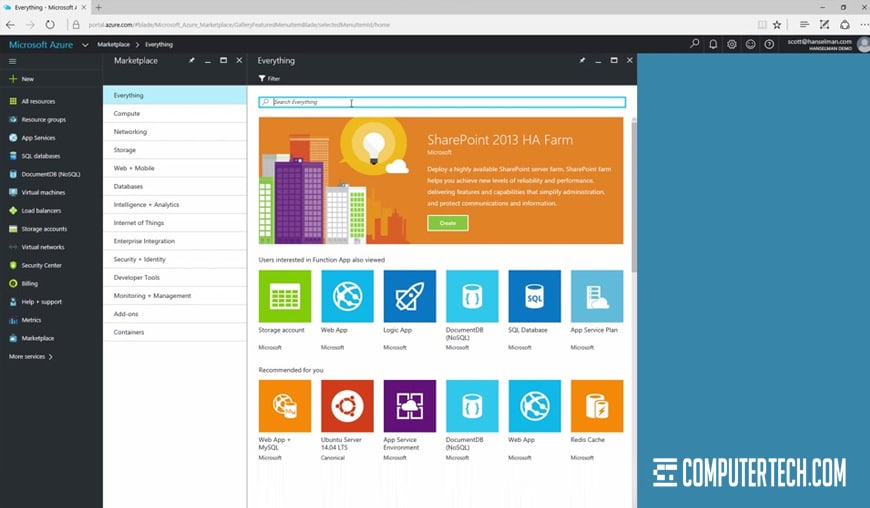
What ends up being most common for many companies is a three-part system.
- First, you have internal IT staff handling the direct and immediate needs of the employees.
- Second, you have SaaS and other as-a-service platforms providing systems and services for specific business needs.
- Third, you have an MSP providing limited but customized solutions for specific systems that would either be too expensive to maintain internally or have proven to be more than your IT team can handle.
Hybrid solutions are among the best options, but picking and choosing which services and systems are managed by which group can be a difficult task. Sometimes, specific systems can fall through the cracks and end up lost with no one trained or responsible for supporting them. This option tends to require more bookkeeping and monitoring than entirely internal or fully outsourced IT solutions.
Determining What’s Right for Your Business
To determine your business IT needs, you should consider asking yourself a handful of questions. The answers will help you figure out the scale, scope, and complexity of service you require.
- Do you need in-person availability for service, support, maintenance, or responsiveness? Typically, MSPs only visit on-site when the need arises. If you need ongoing maintenance, support, or hands-on service, an internal IT department will be the better choice.
- How much of your infrastructure can be migrated to cloud providers? Cloud systems can save your company a lot of money on hardware and software, and don’t require on-site staff to manage them. A hybrid cloud-MSP or cloud-internal setup is often cheaper than either option on its own.
- Do you need IT service outside of business hours? After-hours service tends to cost more regardless of whether it’s an internal or external employee doing it. With an MSP, you may need someone internal on call to give them access to the office if an issue arises.
- Do you have specialized needs in security, compliance, eCommerce, shipping, or another niche? Some MSPs may not be able to provide these technical services. Conversely, it can be costly to hire an employee trained in the right niche.
- Are your needs more focused on hardware or software? Depending on your needs, it may or may not be difficult to find an MSP that provides the service you need. This is especially true if you require support for old or out of date hardware or software.
- What is the overall computer fluency level of your employees? Small companies with generally tech-savvy employees have less need for low-level support. An MSP on a break-fix contract may be the best choice for this scenario.
- Is your budget capable of supporting multiple full-time IT employees? One of the most significant considerations for most companies is the budget. Internal IT tends to be significantly more expensive than outsourced IT, though it can vary depending on the MSP.
When all is said and done, chances are good than an MSP-hybrid option is going to be the best choice for most businesses. It’s simply too expensive for many companies to hire and maintain an internal IT department.
About The Author
Herman
Herman is the lead team member here at Computertech.com. He’s been in IT for over 20 years and has expertise in our various IT Services including Microsoft Azure, Microsoft 365, Microsoft Teams and even Computer Security.
No related posts.
IT Support | IT Services | IT Consultant | Computer Support
Speak to a Human (856) 347-2282
- Home
- About Us
- Services
- IT Support
- Managed IT Services
- IT Consulting and Strategy
- IT Security Services
- IT Infrastructure Services and Networking
- Help Desk and Onsite Support
- Communication and Collaboration
- Specialist IT Services
- Data Backup and Disaster Recovery
- Cloud Computing
- Optimizing Network Consulting Services
- Remote Monitoring and IT Management
- Business Computer Services and Consulting
- Blog
- Contact Us
Navigation- Home
- About Us
- » About Computer Tech
- » What To Expect
- Services
- » IT Support
- » Managed IT Services
- » IT Consulting and Strategy
- » IT Security Services
- » IT Infrastructure Services and Networking
- » Help Desk and Onsite Support
- » Communication and Collaboration
- » Specialist IT Services
- » Data Backup and Disaster Recovery
- » Cloud Computing
- » Optimizing Network Consulting Services
- » Remote Monitoring and IT Management
- » Business Computer Services and Consulting
- Blog
- Contact Us
Internal vs. Outsourced IT Services: Which Should You Choose?
In need of IT Services or IT Support? Call us today at (856) 347-2282
About Us
Computer Tech is an IT Consultant \ Computer Consultant firm providing Computer Support, IT Support and IT Services in South Jersey, IT Services Delaware, IT Services New Jersey, Philadelphia Pennsylvania.
(856) 347-2282Get started:
- 6 Things to Try if Your Work Laptop Won’t Boot Up
- The Ultimate Guide to IT Companies in New Jersey
- What is a Proactive IT Strategy and Why Do You Need One?
- How to Recover Data From a Broken Company Computer
- How NJ Businesses Are Outsourcing Their CIO and CTO Roles
- 8 Benefits of Using a Local New Jersey IT Company
- The Benefits of Managed IT Support Services for Businesses
- How Outsourced IT Support Can Help Employees Working Remotely
- [Guide] What Exactly Does an IT Support Company Do?
- Onsite IT vs Remote: How to Choose the Best for Your Business
Newsletter
Computer Tech, LLC.
105 Market Pl Suite 1, Glassboro, NJ 08028
(856) 347-2282
© Copyright 2025 HighTech Business Solutions. All Rights Reserved.



